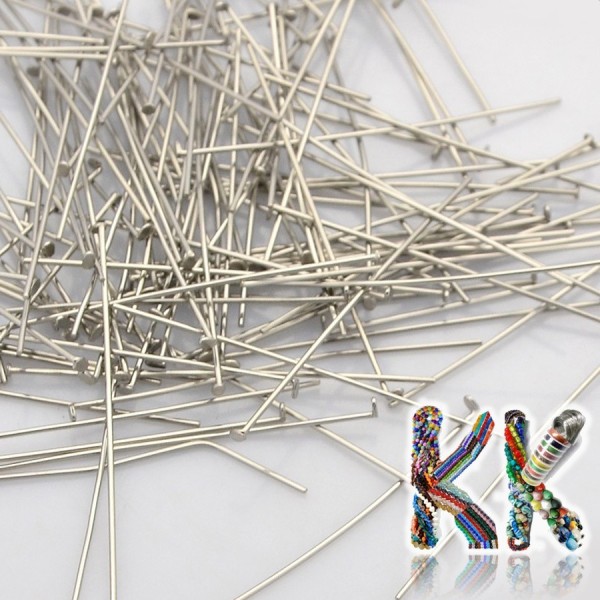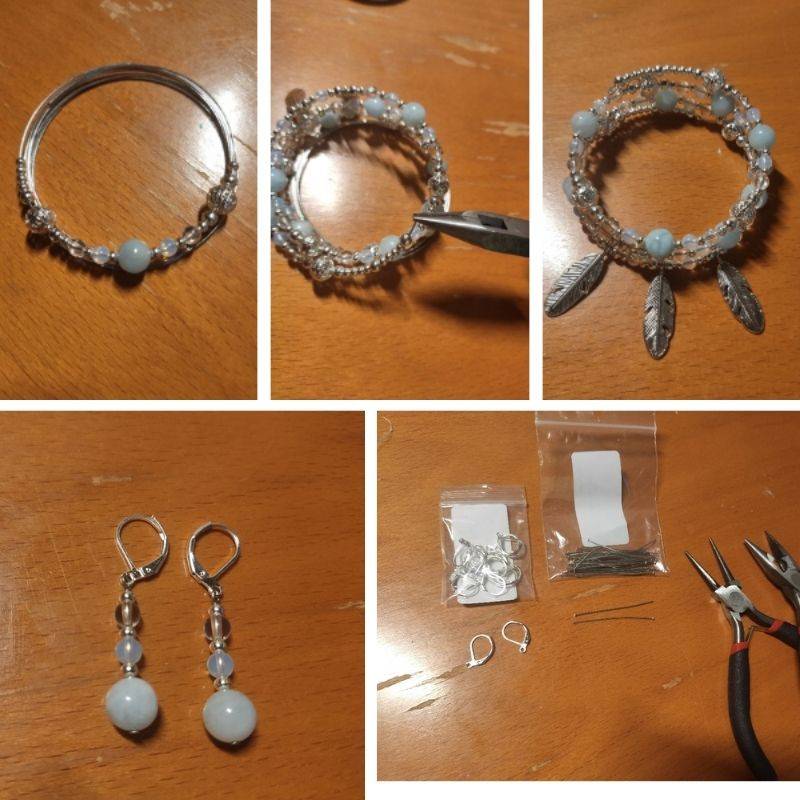304 Stainless Steel Flat Head Pins - 40 mm - Quantity 1 g (approx. 11 pcs)
Flat head pins made of stainless steel with length of 40 mm, diameter of head 2 mm and metal thickness of 0.6 mm. The pins are made of stainless steel type 304.
NOTE: Due to the packaging of the goods during importation, the pins may be bent. This curvature does not affect the quality of the goods - the pins can simply be straightened.
THE MENTIONED PRICE IS FOR 1 g (approx. 11 pieces of pins) - consumption of min. 5 g
Flat head pins made of stainless steel with length of 40 mm, diameter of head 2 mm and metal thickness of 0.6 mm. The pins are made of stainless steel type 304.
NOTE: Due to the packaging of the goods during importation, the pins may be bent. This curvature does not affect the quality of the goods - the pins can simply be straightened.
The stainless steel alloy from which the product is made is referred to as SAE 304 (also known as A2 stainless steel, or 18/8 stainless steel). In addition to iron, as the main component, it usually contains around 18 % chromium and 8 % nickel. Detailed information on the composition and properties can be found, for example, on the English wikipedia - http://en.wikipedia.org/wiki/SAE_304_stainless_steel.
1 g contains approx. 11 rivets. The weight of one rivet is approximately 0.91 g.
Due to the color setting of the monitor, the color of the goods may differ slightly from reality.
Data sheet
- Weight
- 1 ks cca 0,15 g
- Material
- Stainless steel
.
How to identify dyed minerals, artificial minerals and imitations? Simple hammer test can do the trick..
-
How to choose correctly?
-
What is the difference between waxing, dyeing, heating?
-
Why do beads fade?
-
Is there anything I can do against it?
-
Hammer tests for Jade, Agate, Malachite, Opalite, Azurite, Turquoise, Tyrkenite, Larimar, Hematite and Coral
-
When buying beads, why are there different color qualities from the same mineral on the same string?
.
A series of videos to help you navigate your bead selection. Watch the hammer tests where we show the differences in real minerals, synthetic substitutes and plastic imitation minerals. Fortunately, we have everything clearly marked on the Katlas Beads store, we never lie. This is a certainty which is hard to find on other e-shops.
From time to time, we come across someone complaining that they ordered a mineral in a certain colour and that some minerals have a slightly different shade or spots., how do we navigate the selection process? You need to understand that raw minerals are never identical. And it's proof that it's not an imitation or synthetic. On the Katlas beads eshop, you will come across multiple grades of qualities that address these queries.
After watching the videos, you will have accurate information and be able to navigate all the e-stores selling mineral beads.
Don't forget to subscribe to our YouTube channel. You won't miss any important videos and expert advice that will make you an expert in beading.
.
Metals in beads and jewellery components
Take the time to learn everything you need to know in this nine-part video series.
Metals in beads - allergies and differentiation of jewellery metals.
Health hazards in jewellery metals.
Beads and jewellery components made of iron.
Zinc alloy beads and jewellery components.
Beads and jewellery components made of so-called Tibetan silver.
Beads and jewellery components made of brass.
Beads and jewellery components made of aluminium.
Stainless steel beads and jewellery components.
Silver beads and jewellery components.
.
.
Don't forget to subscribe to our YouTube channel. You won't miss any important videos and expert advice that will make you an expert in beading:
.
.















